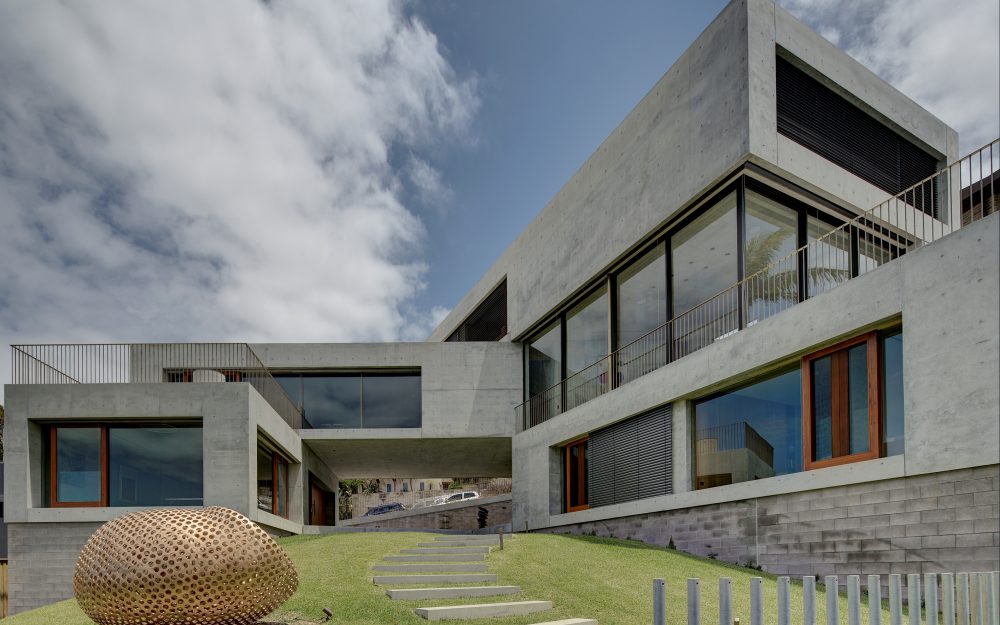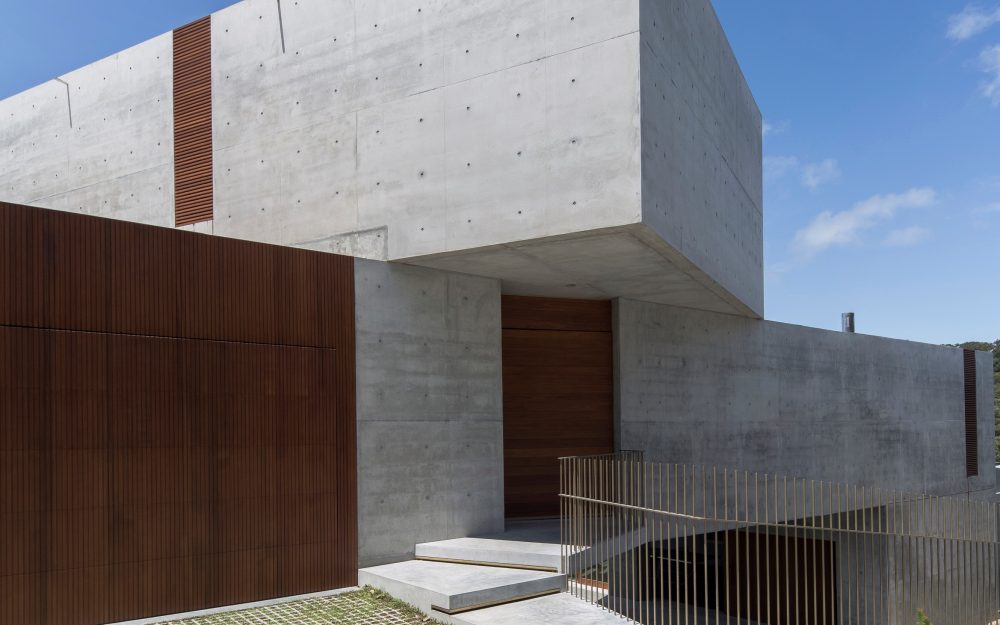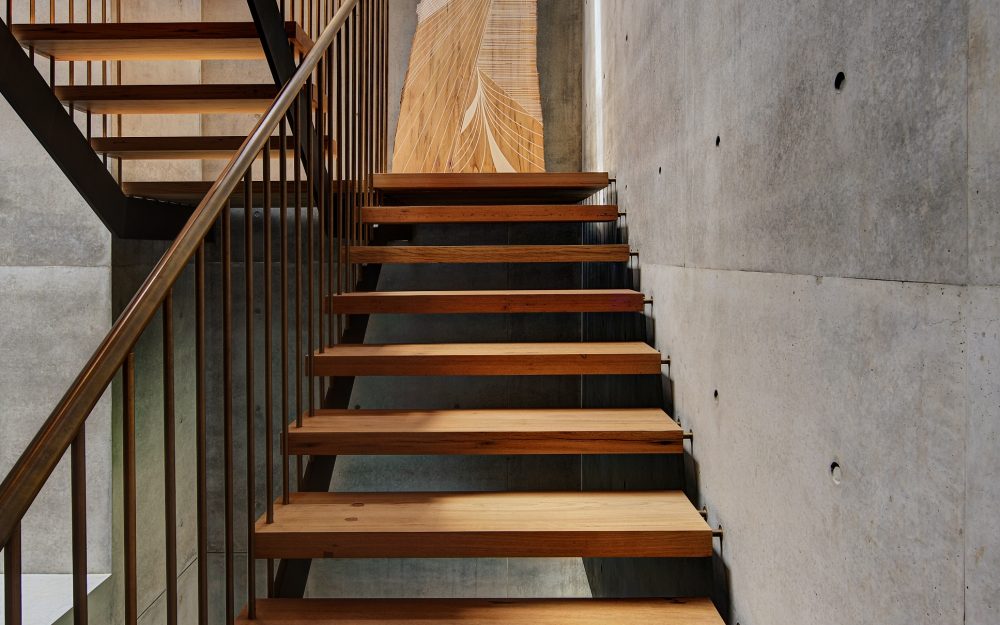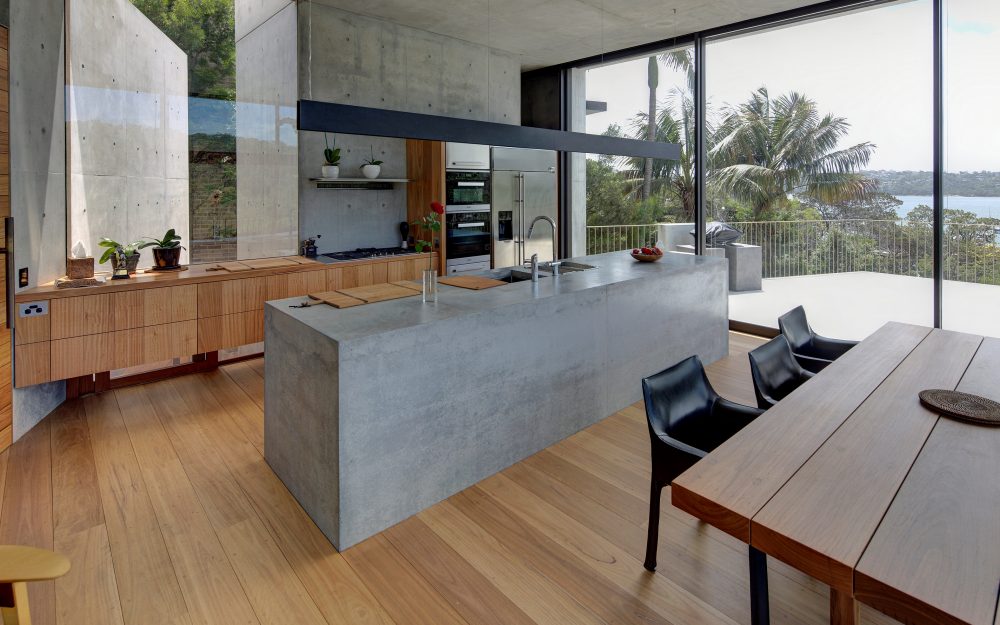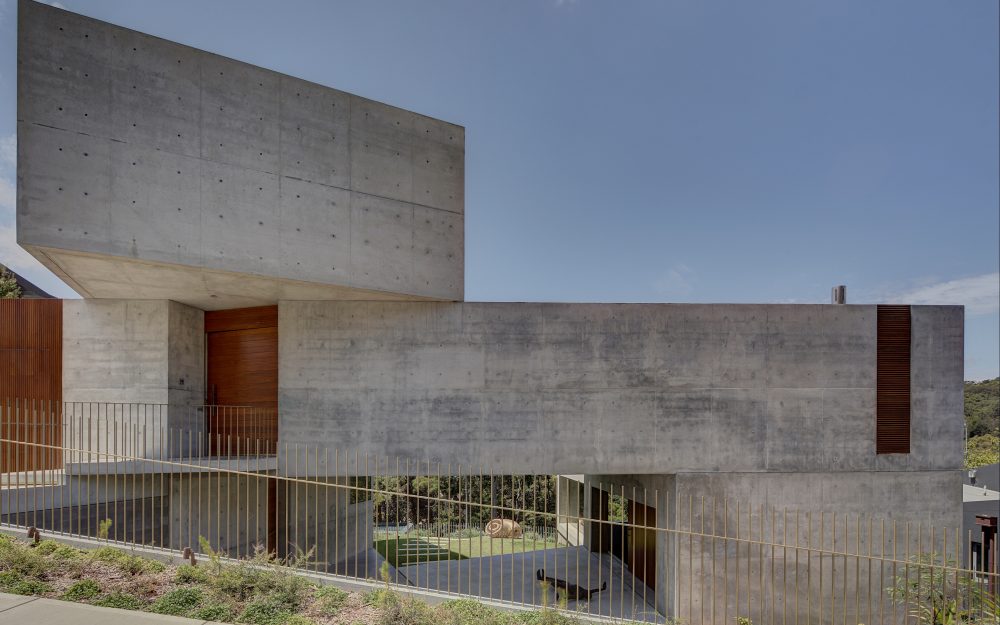36 Plunkett Road
This home is a simple form of off-concrete which is non reflective and recessive. It has a humble entrance which is open to the street (both highly unusual qualities of the area). The low, transparent front fence, together with the horizontal void under the first floor has an overall effect of relief on the streetscape and a generous connection between the public and private domain, and back through to the public domain once again. An example of this is the view from the footpath through the private garden to Balmoral and the harbour. The architecture sends a clear message that community, connection and sharing the natural assets of our city are all important.
When moving through the house with the architect and client, the shared brave vision and cohesion between them is evident.
The spaces throughout the home have a great sensitivity to human scale, also providing a wonderful backdrop for an eclectic and personal mix of art and furniture.
Various views are capitalised upon from numerous vantage points throughout the house – water through trees is seen as primary, the lush valley as secondary but still significant – there is an artful, deliberate weighting between these two.
A holistic and fundamental approach to sustainability exists through siting, materials, glazing, sun control, cross ventilation, and natural light control.
The architectural and interior detailing throughout is rigorous, consistent and true to the overarching conceptual approach.
Overall the home demonstrates an extremely high level of awareness of the potential opportunities of this site and brief. And more than that, the ability to resolve them in a most simple and elegant way resulting in a balance between stillness and animation, deeply connected to the site, the broader context, the community and the client.
Sustainability
The building relies on sustainable construction and design techniques to create naturally lit and comfortable spaces. Planning of living and recreational spaces with the northerly aspect has facilitated the design of passive lighting, heating and cooling systems to minimise energy consumption and maximise amenity for the residents.
Innovative sustainable design elements:
High thermal mass, deep sunlight penetration in winter, and high performance glazing work to stabilise internal temperatures. These are supplemented by hydronic heating, LED lighting and an extensive 7.7kW peak output photovoltaic system to minimise energy usage. Additionally, a 20,000L rainwater tank supplies excess water to the garden and pool.
Environmental footprint of the building is minimised by:
Passive design was integral to the design process, resulting in a low energy home. The need for active heating and cooling systems is minimised by maximising the building’s reliance on ventilation and sunlight. The photovoltaic system and rainwater tank minimise electricity and water inputs required.
Architect
Popov Bass Architects
Project Date
2014
Award
Contribution to the Built Environment


